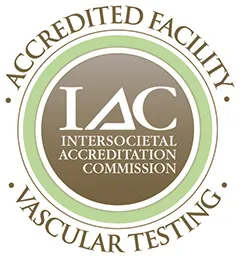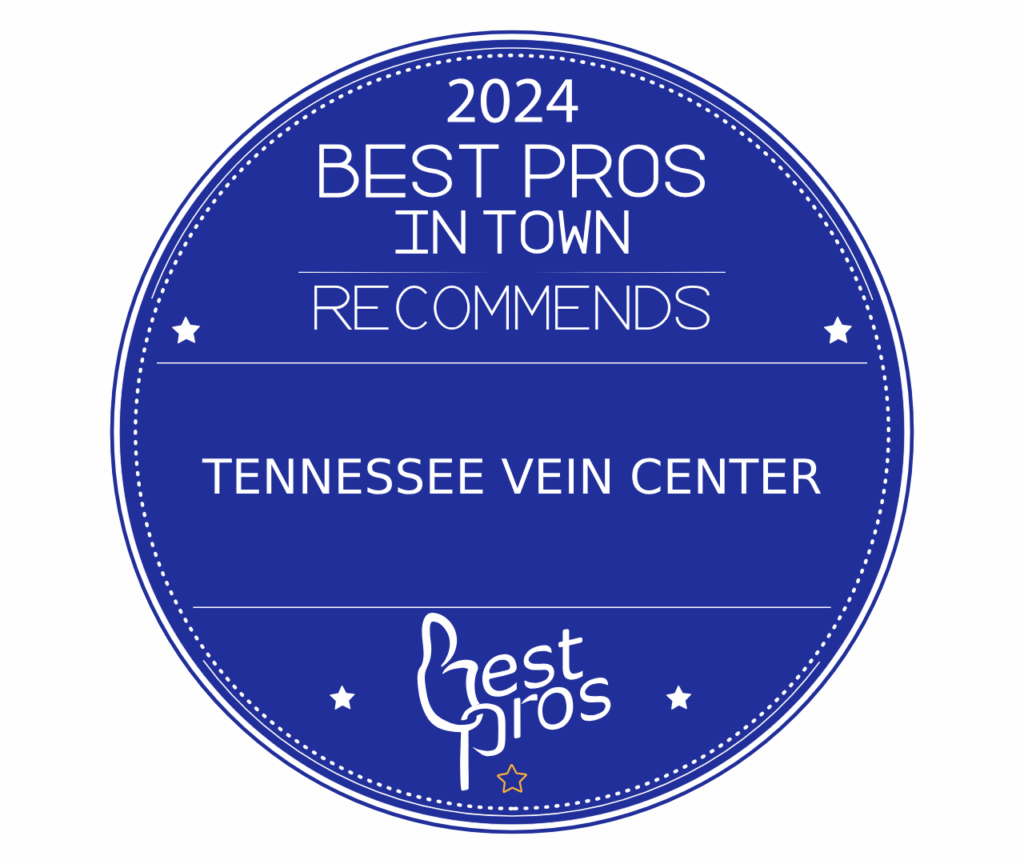VeinDisease
Vein Disease
Tennessee Vein Center: Types of Vein Disease Treated
According to the Cleveland Clinic, nearly 1 in 20 adults are affected by chronic venous insufficiency or vein disease.
At Tennessee Vein Center, we understand the worry that can come with new or worsening vein disease symptoms, especially if they take a toll on your health or everyday life.
We diagnose and treat all vein diseases, from spider veins to deep vein thrombosis. Our highly-trained team of venous experts is experienced in advanced non-surgical alternatives and provides innovative care to help treat various vein diseases.
Let’s explore vein disease in further detail, including an answer to “What is vein disease?”, an overview of the signs of vein disease, and a deeper look at exactly what causes vein disease.
Continue reading to learn more.
What is Vein Disease?
Veins are the vessels that carry deoxygenated blood from the body’s organs and tissues to the heart. When they stop working correctly, vein disease can occur. Most often, vein disease affects the leg veins but can occur anywhere in the body.
Vein disease, also known as venous disease or venous insufficiency, refers to a range of conditions that affect the veins in the circulatory system.
Proper diagnosis and treatment by a vascular specialist are essential to manage vein disease and prevent complications.
What Causes Vein Disease?
In short, vein disease is a venous condition caused by veins not functioning as they should.
Healthy veins have valves that keep blood flowing to the heart efficiently. However, when venous insufficiency develops, the valves stop working correctly.
When this occurs, blood essentially flows backward and pools in the inferior veins, causing painful and unsightly symptoms such as the appearance of spiderweb-like or ropey veins on the surface of your skin.
Vein Disease Risks
It is essential to know that anyone at any time can develop vein disease, but you are considered at an increased risk based on the following factors:
- Age
- Genetics
- Gender
- Pregnancy
- Obesity
- Smoking
- Those living with other vein conditions
- A sedentary lifestyle, including extended periods of standing or sitting
Depending on the disease’s type, cause, and severity, you may experience various vein disease symptoms that could affect your everyday life and overall health.
Vein Disease Symptoms
Vein disease symptoms range from mild to severe and most often affect the legs. The most common symptoms include:
- Swelling, especially in the lower legs
- Leg cramping, especially at night
- Tired, heavy legs
- Changes in the appearance of your skin
- Aches and pains in the legs
- Restless legs
- Spider veins
- Bulging veins just below the skin’s surface
- Loss of hair on the lower legs, feet, and ankles
- Skin infection
- Spontaneous bleeding
- Leg ulcers
Because many vein diseases come with little to no symptoms during their first stages, most patients ask, “Why treat veins?” We delve into that topic more below.
Why Treat Veins?
Vein conditions are treated for various essential reasons that significantly impact an individual’s health and well-being.
Primarily, treating these conditions aims to alleviate discomfort, pain, and swelling in the legs associated with conditions like varicose veins or chronic venous insufficiency. By addressing these symptoms of vein disease, treatment significantly enhances a person’s comfort and mobility, improving their daily life.
Moreover, managing vein conditions plays a crucial role in preventing potentially severe complications like blood clots, ulcers, and more serious issues like deep vein thrombosis (DVT) or pulmonary embolism.
Beyond symptom relief and risk reduction, treating vein conditions can also enhance the appearance of visible veins, affecting an individual’s self-esteem and confidence.
Ultimately, vein treatments aim to enhance the overall quality of life by improving circulation, mitigating discomfort, and reducing the risk of complications associated with vein conditions.
Types of Vein Diseases We Treat
The most common vein-related conditions and diseases we treat are in the table below. Read on to learn more.
Spontaneous and sudden bleeding from a vein is known as phleborrhagia. Veins can burst and rupture when they become enlarged and weakened due to underlying vein disease.
This vein condition occurs when a blood clot forms in a deep vein within the body, most often in the lower leg, thigh, or pelvis. If left untreated, it can lead to a severe medical emergency.
The most common type of ulceration is open leg sores caused by poor blood circulation in the veins. They are often due to an underlying vein disease affecting your vein valves.
These small, damaged veins often appear on the skin’s surface with a spider-web-like appearance. An irregularly functioning vein valve causes them.
Affecting about 23% of Americans each year, these enlarged, twisted veins are caused by damaged valves that allow blood to flow backward, which can lead to more serious venous insufficiency if left untreated.
Phlebitis means inflammation of a vein. Most cases of phlebitis in the legs are due to blood clots on a superficial or deep level.
These common pin-head-like lesions appear on the skin in a bright red color.
They are usually harmless and unrelated to underlying conditions but can cause random bleeding in a high-contact area.
Quick and easy removal is the best treatment option.
Unwanted chest veins are a common problem for women. They are often caused by pregnancy, breast augmentation surgery, or chronic sun exposure.
Blue-green reticular veins may become more pronounced following changes in the breast tissues, while small red spider veins are often a result of chronic sun exposure or breast augmentation surgery.
Telangiectasias, or facial veins, are pink, red, or purple in appearance.
They commonly occur around the nose, chin, and cheeks.
Genetics can play a significant role in their development, along with chronic sun exposure, alcoholic beverages, hot and spicy foods, rosacea, and environmental irritants.
Port wine stains are a type of birthmark made up of a collection of blood vessels.
They can be pink, red, or dark maroon in color. They tend to darken in color over time as a child grows into adulthood.
A venous lake is a type of vascular malformation commonly occurring on the lips. They are dome-shaped and result from a collection of enlarged veins under the skin.
They are typically dark purple or blue in appearance.
If a venous lake is large and raised, it can become irritated, itchy, and sore. For most, venous lakes can bleed easily when directly impacted.
Reduce The Symptoms of Vein Disease with Minimally Invasive Treatment in Tennessee
Your vein health matters to us.
If you’re living with vein disease or are experiencing new or worsening symptoms consistent with a vein-related condition, our team of caring and compassionate experts is here for you every step of the way.
Schedule an appointment today at our Knoxville area vein center today for further care, including comprehensive diagnosis and minimally invasive treatment options for your vein disease.

